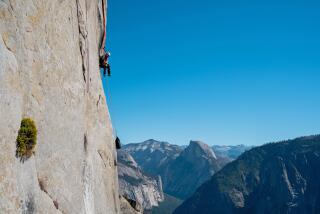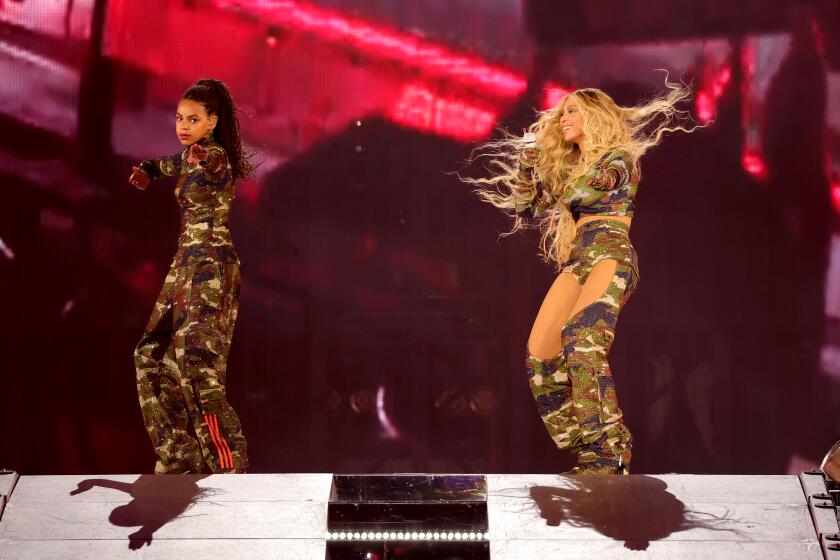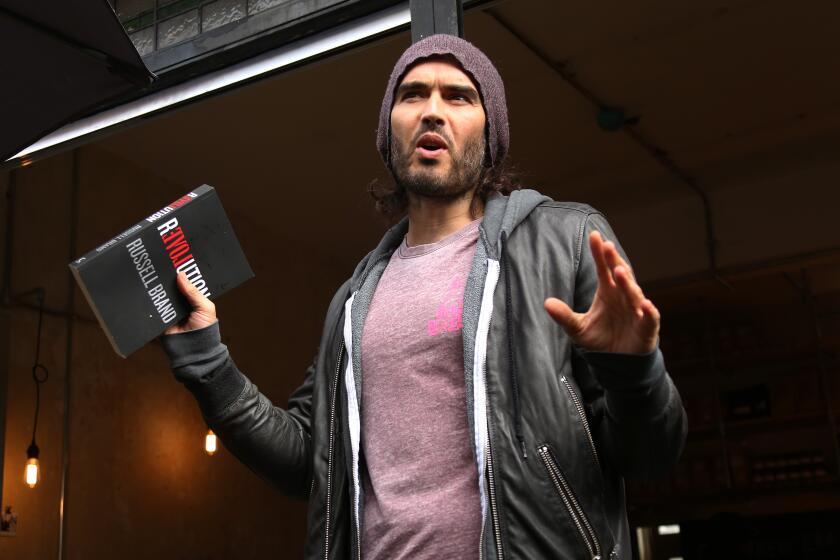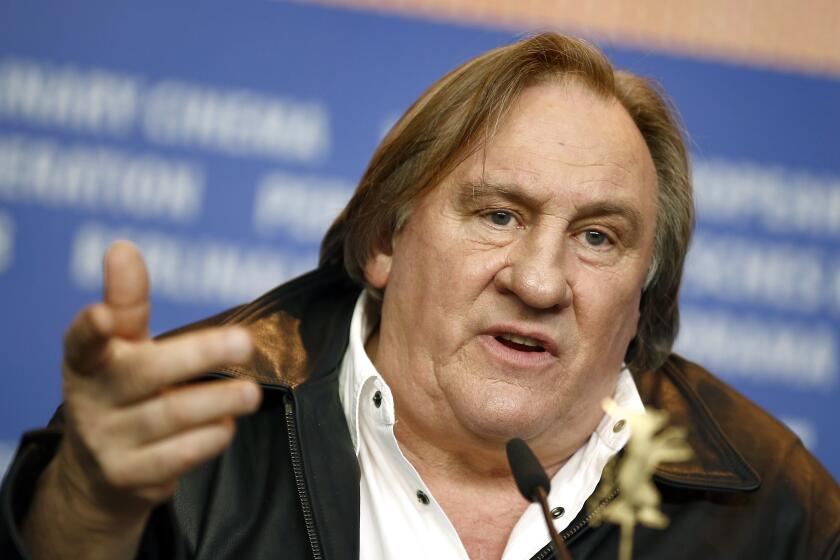Fall Movie Guide: Making ‘Everest’ was a tall order for filmmakers
On the set of most $60-million movie productions, stars run their lines in tricked-out trailers. Bleary-eyed assistants are on call to fetch chai lattes and quinoa salads. Actors sit in fancy folding monogrammed chairs.
But on the set of “Everest,” cast members were lucky if they still had feeling in all their extremities by day’s end.
The 3-D film, which scored the prestigious opening-night spot at the Venice Film Festival last week, tells the story of one of the biggest disasters to ever occur on the Himalayan peak. In May 1996, a sudden blizzard overtook the mountain full of climbers at varying stages toward the summit — eight people died. Tales of the tragedy ricocheted across the media, and Jon Krakauer — an Outside magazine journalist who was climbing the world’s highest mountain alongside some of those who didn’t make it — wrote a gripping account of the group’s fight for survival, “Into Thin Air.”
SIGN UP for the free Indie Focus movies newsletter >>
Hollywood, of course, was eager to tell its own version of the story. David Breashears, an experienced mountaineer who has made it to the top of Mt. Everest five times, made a popular 1998 Imax documentary about the disaster. But finding financial backers to fund a feature production during which cast and crew would be subjected to high altitudes and freezing temperatures? That would take nearly two decades.
It’s a journey that began with Tim Bevan, the co-chair of Working Title Films, who found himself transfixed by Krakauer’s account. In the early 2000s, Bevan began to investigate how he could bring Krakauer’s story of embedding with Adventure Consultants, a climbing expedition company led by New Zealander Rob Hall, to the big screen.
He soon learned that phone conversations between Hall and his wife, Jan Arnold — who was pregnant at home while her husband was stranded on Everest — had been recorded. And the transcripts of those recordings had been purchased by Universal Pictures, which will release “Everest” on Sept. 18.
So Bevan teamed with the studio, working on a script based on the transcripts as well as a memoir by Beck Weathers, a Texan on Hall’s expedition left for dead at one point on the mountain. Stephen Daldry, who was coming off an Oscar nod for directing “The Hours,” was hired to lead the film. He and Everest vet Breashears even ventured to the mountain in 2004 to shoot footage.
“But we never got the script right, if I’m honest,” recalled Bevan. “We were trying to tell too many different stories.”
So the project lay dormant again for almost a decade. Financing came and went. There were numerous script rewrites, eventually paring the story to focus mainly on just two characters — Hall and a client who had failed to summit Everest on a previous attempt. And then in 2013, Baltasar Kormákur, the plucky Icelandic director behind the 2012 survival film “The Deep,” came on board, with a final script credited to William Nicholson and Simon Beaufoy. And things finally started moving.
But not that fast. Because Kormákur wanted to shoot on Everest itself — an option the film’s backers and advisers immediately balked at.
“I made it very clear from the beginning that I was gonna push this as far as I possibly could. I wasn’t going to put anyone in life-threatening danger,” said the director, calling from Denmark last month, where he was on a horseback riding trip with his family. “But then you have the studio and the insurance companies telling you about how many people have died and the ice falls and you realize you have to find another way around it.”
Enter Breashears, whom Working Title hired as a consultant to advise on the production. While he deemed it possible to film in Everest’s foothills and at its base camp, Breashears convinced Kormákur that making the entire movie on the mountain wasn’t realistic.
“Of course, Balt was quite keen on it — and he’s quite strong in the mountains and very good in the cold and difficult conditions. But it wasn’t practical,” Breashears said. “It’s not a place to take a large team of actors and put them into harm’s way like that. Even for fast-moving, efficient teams, there are times when you have to stop and set up or wait for hours for a shot that you need. It was impractical at every level to take our team into the icefall and expose them to that kind of risk.”
Even so, the crew still got a healthy dose of Everest. When the production began in January 2014, everyone gathered in Katmandu to shoot at the base of the mountain, roughly 16,000 feet above sea level.
“In many ways, going to Nepal first was a really good thing, because everyone had to get used to the fact that there was not gonna be the usual paraphernalia of a big movie,” said Bevan. “There weren’t gonna be endless caravans or minders and everyone was going to have to carry a kit. There would have to be a spirit that there was a sort of collective.”
Most of the outdoor footage — in which the climbers battle the freezing winds and plummeting snow in a desperate attempt to make it back to base camp — would eventually be shot in northern Italy’s Val Senales, where Breashears agreed the terrain looked similar enough to that of Everest. Roughly 180 crew members — including 30 Nepalese Sherpas — traveled to the ski resort in the Alps, which was hit with the biggest snowfall in a century during production. The weather proved so unpredictable that the set was sometimes forced to close for days at a time because of potential avalanches. When it was open, snowmobiles, helicopters, cable cars, chairlifts — and yaks — were used to shuttle equipment up to 10,000 feet.
“The weather ended up being absolutely appalling,” said Bevan, noting they often didn’t know what they’d be shooting until the evening before. “Everybody was on standby at a base camp in a ski town. And when we got up to the location, there was a big tent with space heaters in it so people could stay warm. In spite of everyone being very well kitted out, your feet would get cold after five or 10 minutes and you’d have to go warm up. In a lot of the shots, the actors are reacting rather than acting.”
It was difficult, even for Jason Clarke, who trained as a mountaineer for months to accurately portray Rob Hall. Clarke — who stars alongside a beard-heavy cast including Jake Gyllenhaal, Josh Brolin and John Hawkes — even subjected himself to a night climb midsnowstorm on the United Kingdom’s highest mountain, Ben Nevis.
“I just wanted to get used to being in a storm with the massive winds and snow,” said the Australian actor, 46. “You learn the basics of how to take care of yourself in 120 mile-per-hour wind; how to regulate your body heat. And to experience not being able to see 2 meters in front of you? It was extraordinary.”
Despite his rigorous preparation, the conditions in Val Senales rattled Clarke.
“You wake up at 4 a.m. and you’re flying in a helicopter to 12,000 feet and it’s freezing and you’re having strange dreams because of the altitudes and you get headaches,” the actor said. “It’s a lot to adjust to. But it felt like an expedition — a shared odyssey. The elements helped the work. I used it to get in character.”
MORE:
FULL COVERAGE: Fall Movie Guide
Filmmakers tackling social issues keep it real but also entertaining
Joseph Gordon-Levitt mentored by daredevil Philippe Petit for ‘The Walk’
More to Read
Only good movies
Get the Indie Focus newsletter, Mark Olsen's weekly guide to the world of cinema.
You may occasionally receive promotional content from the Los Angeles Times.







